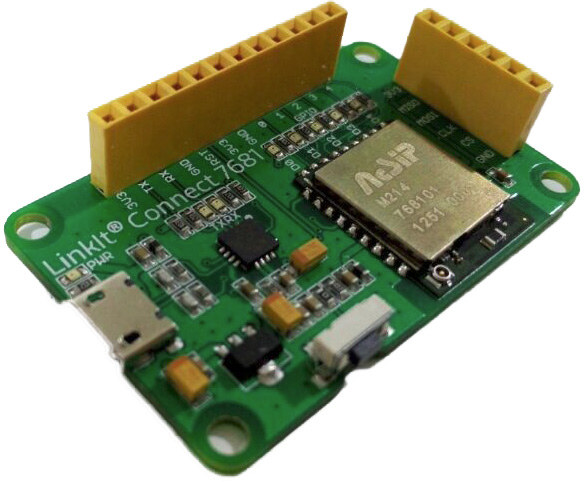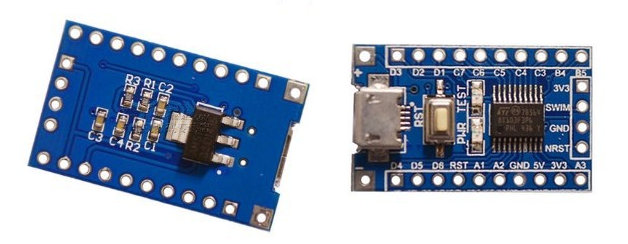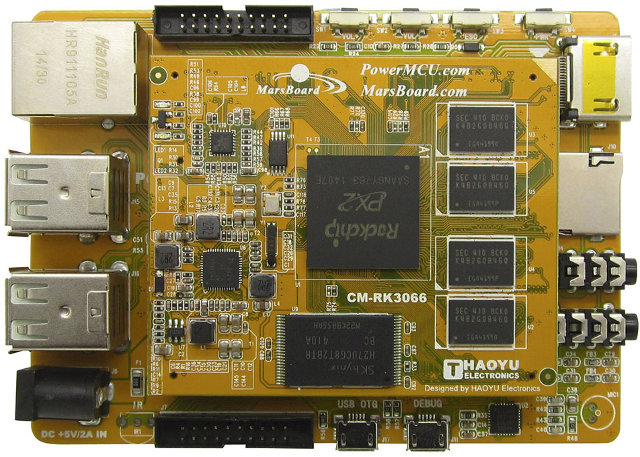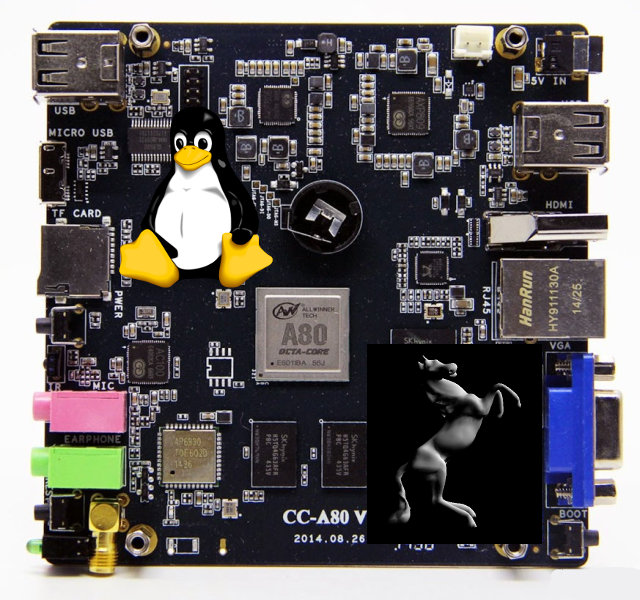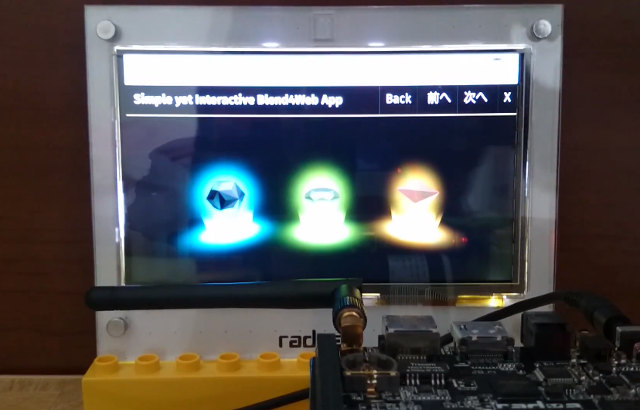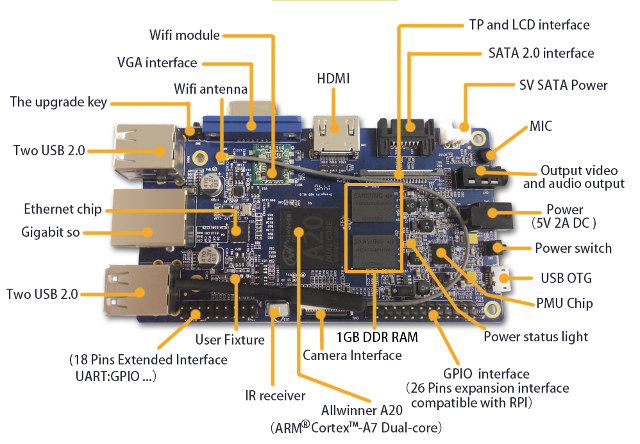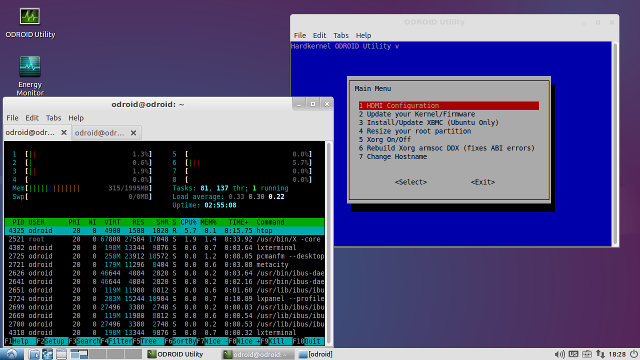So it looks like Mediatek has decided to carry on with its Mediatek Labs endeavours, as after launching LinkIt ONE last year, they’re about to introduce LinkIT Connect 7681, a development board with a Mediatek MT7681 based Wi-Fi module, and access to various GPIOs. LinkIt Connect 7681 HDK (Hardware Development Kit) specifications: SoC – Mediatek MT7681 Andes N9 processor @ 80 MHz with 64KB RAM, Storage – 1MB SPI Flash for firmware Connectivity – Wi-Fi: 802.11 b/g/n for Station mode; 802.11 b/g for AP mode via a MT7681 module by AcSIP Headers – 12-pin header for UART, 5 GPIOs (also usable as software PWM), RESET, and 3.3V/5V/GND; 6-pin header for SPI, 3.3V and GND. USB – 1x micro USB for power and programming/debugging Misc – Reset push-button, 2x UART LEDs Power Supply – On-board 1A 3.3V voltage regulator (can be powered from USB connector) I/O Voltage – 3.3V for GPIO […]
Meet STMicro STM8S Based One Dollar Development Board
ESP8266 modules are $3 Wi-Fi boards targeting IoT applications that can be used in standalone mode, or connected to another MCU based board. But what if you don’t actually need Wi-Fi, but instead require a tiny board to control a few GPIOs? Arduino Pro mini can be used for this, but it costs about $10 on Sparkfun, and it’s certainly cheap enough for most projects. Switching to Aliexpress, you can get Arduino Pro mini clones for about $2, and a bit less in 10 pieces quantities. But you can get even cheaper and add a micro USB port with STMicro STM8S based boards that can be found for 5.5 CNY (Less than $1) on Taobao.com, or – once oversea shipping is factored in – about $1.60 to $1.70 on BuyInCoins, or Aliexpress without headers, and the version with headers sells for about $2 or more. Let’s check the board specifications: […]
$60 MarsBoard Rockchip PX2 Development Board Runs Ubuntu, Debian, openSUSE, or Android 4.4
Haoyu Electronics has made a new board similar to their MarsBoard RK3066, but instead of using a CPU module with Rockchip RK3066, they’ve used the industrial version of the chip called Rockchip PX2 dual core Cortex A9 processor. The board is also comprised of a baseboard and CPU module (CM-PX2), and based on the name of the pictures it’s using the exact same PCB: CM-RK3066 SoM, and SOM-RK3066 baseboard, but they simply replaced RK3066 by PX2, and increased the NAND flash capacity to 8GB. CM-PX2 Computer-on-Module: SoC – Rockchip PX2 dual core ARM Cortex A9 @ 1.4 GHz + Mali-400MP4 GPU System Memory – 1GB DDR3 Storage – 8 GB NAND Power Management Unit – TPS659102 Misc – TX indicator LED use for debug, Power Indicator LED 10/100M Ethernet PHY – LAN8720A Connectors – 2x 100- pin for baseboard connection, 40-pin connector (unsoldered) Dimensions – 70 x 58 mm SOM-RK3066 […]
Crowdfunding Report for 2014 on CNX Software Blog
Following up on my 2013 Crowdfunding Report, I’ve gone through all 55 Kickstarter and Indiegogo crowdunding projects featured on CNX Software between December 2013 and November 2014 (inclusive) to see how well they fared. The table below sort projects chronologically as they were published on this very blog. Date Project Crowdfunding Site Funded? Pledged amount / Goal Expected Delivery Actual Delivery Comments 2. Dec. 2013 Micro Python Kickstarter Yes 97,803 GBP / 15,000 GBP 03/2014 04/2014 Available @ https://micropython.org/store/#/store 5. Dec. 2013 Plugaway Kickstarter Yes $162,835 AUD / $50,000 AUD 04/2014 – People upset because of lack of updates. Project might be dead, and backers lost their money 6. Dec. 2013 AIRTAME Indiegogo Yes $1,268,332 / $160,000 05/2014 12/2014 People have started received the beta versions, after a massive 8-month delay 7. Dec. 2013 Crystal Board Kickstarter No $14,574 / $200,000 04/2014 – The project appears to be dead 10. […]
3D Graphics Acceleration in Linux on Allwinner A80 based Cubieboard4
Allwinner A80 is a powerful octa-core processor found in development boards and TV boxes such as Cubieboard4 or Tronsmart Draco AW80. Some early Ubuntu images and instructions had already been released for A80 Optimusboard and Draco AW80, but none of these featured GPU drivers for 3D acceleration, which to be honest, has limited advantages in Linux desktop distributions since desktop environments and most apps require full OpenGL support, i.e. not only OpenGL ES, and the only ARM SoC that can provide OpenGL support without external graphics card is Nvidia Tegra K1 SoC. Having said that GPU drivers would pave the way for smooth OpenELEC / Kodi user interface support in Allwinner A80 Linux distributions. That’s only one part of the puzzle, since the GPU normally handles the user interface, while the VPU takes care of video decoding. The good news is that CubieTech release updates images for their Cubieboard4 (CC-A80) […]
WebGL Demos in Radxa Rock Pro Board Running Firefox OS 2.1
Radxa Rock Pro is a development board powered by Rockchip RK3188 quad core Cortex A9 processor, and although 2D/3D graphics acceleration via Mali-400MP4 is shown to be possible in Linux with tools like es2gears and glmark2-es2, full integration is seldom worked on, and things like WebGL may not work in web browsers. But thanks to the work of naobsd and MatchStick team, Firefox OS has been ported to this Rockchip development board, and as you’ll see in the video below, some WebGL demos work amazingly well. The hardware setup for this demo is comprised of Radxa Rock Pro development board, a 7″ LCD display with touchscreen, and some lego bricks :). WebGL demos can be found @ https://developer.mozilla.org/ja/demos/tag/tech:webgl, so you could try your own platform to see how it performs. If you own a Radxa Board Pro (or Lite), you can even build Firefox OS by yourself by following the […]
Orange Pi Development Boards Are Raspberry Pi “Clones” based on Allwinner A20 and A31s
After Raspberry Pi, Waxberry Pi, and Banana Pi boards, here come another fruit-named board with Orange Pi. There are actually three models, with Orange Pi and Orange Pi mini based on Allwinner A20, and Orange Pi Plus powered by a quad core Allwinner A31s processor. I’ve drawn a comparison table with the specifications for the three models. Please note that Orange Pi Plus full specifications have not been released yet, so I don’t have all details. Orange Pi Mini Orange Pi Orange Pi Plus SoC Allwinner A20 dual core Cortex A7 processor up to 1GHz with Mali-400 MP2 GPU Allwinner A31s quad core Cortex A7 processor with PowerVR SGX544MP2 GPU System Memory 1 GB DDR3 Storage 2x micro SD slot + SATA NAND Flash + micro SD slot + SATA TBD Video Output HDMI, AV, and DSI I/F HDMI, AV, VGA, and DSI I/F HDMI, AV, and DSI I/F Audio I/O HDMI, […]
How to Modify HDMI Output Parameters in Linux for ODROID-XU3 (Lite) Development Board
Good news, I’ve finally managed to make HDMI output in my ODROID-XU3 Lite development board work with the Ubuntu image after some more tweaking. So ODROID XU3 Lite Ubuntu review is coming in the next few days. But first, I’ll explain the few steps I went through, in case others experience a similar issue. I downloaded, extracted, and flashed the latest Ubuntu image to a micro SD card with dd to give another try at running Ubuntu on my board, but no luck, I still got that black screen, albeit the system boots properly, as I got the command line using the serial console. During my Android review of ODROID-XU3 Lite, I noticed the system would always revert back to 720p60 video output, and HDMI output settings can be selected in /media/boot/boot.ini with the following content:
|
1 2 3 4 5 6 7 8 9 10 11 12 13 14 15 16 17 18 19 20 21 22 23 24 25 26 27 28 29 30 31 32 33 34 35 36 37 38 39 40 41 42 43 44 45 46 |
ODROIDXU-UBOOT-CONFIG # U-Boot Parameters setenv initrd_high "0xffffffff" setenv fdt_high "0xffffffff" # Mac address configuration setenv macaddr "00:1e:06:61:7a:39" #------------------------------------------------------------------------------- # Basic Ubuntu Setup. Don't touch unless you know what you are doing. # -------------------------------- setenv bootrootfs "console=tty1 console=ttySAC2,115200n8 root=UUID=e139ce78-984" # boot commands setenv bootcmd "fatload mmc 0:1 0x40008000 zImage; fatload mmc 0:1 0x42000000 u" # --- Screen Configuration for HDMI --- # # --------------------------------------- # Uncomment only ONE line! Leave all commented for automatic selection. # Uncomment only the setenv line! # --------------------------------------- # ODROID-VU forced resolution # setenv videoconfig "video=HDMI-A-1:1280x800@60" # ----------------------------------------------- # 1920x1080 (1080P) with monitor provided EDID information. (1080p-edid) # setenv videoconfig "video=HDMI-A-1:1920x1080@60" # ----------------------------------------------- # 1920x1080 (1080P) without monitor data using generic information (1080p-noedi) # setenv videoconfig "drm_kms_helper.edid_firmware=edid/1920x1080.bin" # ----------------------------------------------- # 1280x720 (720P) with monitor provided EDID information. (720p-edid) # setenv videoconfig "video=HDMI-A-1:1280x720@60" # ----------------------------------------------- # 1280x720 (720P) without monitor data using generic information (720p-noedid) # setenv videoconfig "drm_kms_helper.edid_firmware=edid/1280x720.bin" <strong> </strong> # ----------------------------------------------- # 1024x768 without monitor data using generic information # setenv videoconfig "drm_kms_helper.edid_firmware=edid/1024x768.bin" # final boot args setenv bootargs "${bootrootfs} ${videoconfig} smsc95xx.macaddr=${macaddr}" # drm.debug=0xff # Boot the board boot |
I actually tried a few settings in my previous attempt but unsuccessfully. Now […]


